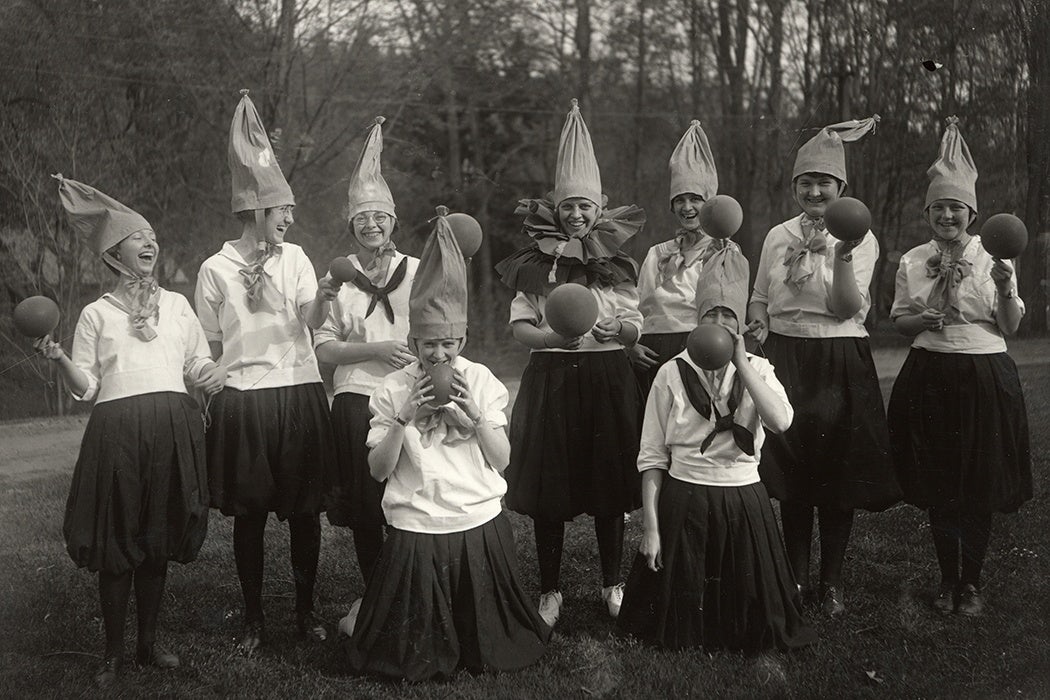What’s a lesbian? When it comes to the past, that’s an extremely difficult question to answer. Historical silence and social mores makes the “did they or didn’t they” question nearly impossible for scholars—but they have plenty of information about the romantic friendships that were common throughout the nineteenth and early twentieth centuries. And those passionate friendships often expressed themselves through a “crush,” “smash,” or “mash.”
Rona M. Wilk follows all three practices in her history of how women crushed on each other at same-sex colleges like Vassar, Barnard, and Smith. “The crush pervaded college culture,” writes Wilk, striking women speechless as they fell for their college friends. Someone who developed a fancy for another person had a crush, and once they won over the object of their affections, they became “smashed” by their love. From googly-eyed looks to bouquets and trinkets, college women tried hard to win each other with poems, declarations of love, and open sentiment.
But not everyone loved crushes. People worried that crushes would keep women from marrying men, decried them as immature and hysterical, and criticized the practice. As developing psychological views began to depict women as sexual beings, crushing began to ring alarm bells for administrators and girls alike. By 1920, writes Wilk, “affairs of the heart between women became increasingly suspect, closing the door on the last breath of innocence.”
During that innocent time, though, people could read about crushing in books about college life. Sherrie A. Inness’s study of women’s college fiction reveals a universe of affectionate relationships between women. Friendships were construed as romantic and crushes accepted, writes Inness, and crushes in turn developed specific social guidelines.
The best smashes, women’s college fiction held, involved freshmen falling in love with older girls. Once a relationship was established, those older girls took the younger girls in hand and passed on institutional knowledge and norms. And heaven forbid you develop a crush on any old girl. Teachers and “bad girls” were off-limits, writes Inness.
As long as a crush was kept safely in the public sphere—and not, presumably, taken to the bedroom—it was socially acceptable. College fiction frankly described everything from caresses to mouth kissing, and painted the women who aroused these sensations as desirable and sexual. But slowly, that openness faded as psychological literature painted same-sex relationships as “complexes” and “disorders.”
Ironically, writes Inness, the openness about crushes in women’s college books may have served to diminish them. Portrayed as temporary obsessions, fictional crushes showed women’s relationships with one another as less important than their eventual marriages. But the books remind us that female sexuality has never been simple—and that big questions remain about same-sex desires of the past.







